Ritchie Valens
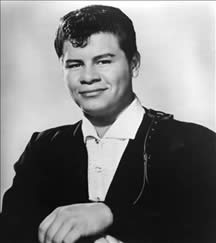
Ritchie Valens (1941-1959), was born Richard Steven Valenzuela. He was an American singer, songwriter and guitarist.
A rock and roll pioneer and a forefather of the Chicano rock movement, Valens’ recording career lasted eight months, as it abruptly ended when he died in a plane crash.
Valens was born Richard Steven Valenzuela in Pacoima, a neighborhood in the San Fernando Valley region of Los Angeles, on May 13, 1941.
His parents were Joseph Steven Valenzuela and Concepcion Reyes, and he was of Mexican descent. Ritchie Valens was brought up hearing traditional Mexican mariachi music, as well as flamenco guitar, R&B and jump blues.
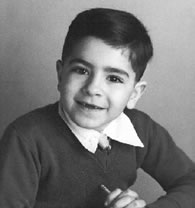
Valens expressed an interest in making music of his own by the age of 5, and he was encouraged by his father to take up guitar and trumpet, and later taught himself the drums. Even though Ritchie was left-handed, he was so eager to learn the guitar that he mastered the traditionally right-handed version of the instrument. When he was sixteen years old, he was invited to join a local band, the Silhouettes, as a guitarist, and when the main vocalist left the group, Ritchie assumed this position.
On October 19, 1957, Valens made his performing debut with the Silhouettes. Valens attended Pacoima Junior High School (now Pacoima Middle School). By the time Valenzuela was attending junior high school, he brought the guitar to school and would sing and play songs to his friends on the bleachers.
Self Taught Musician
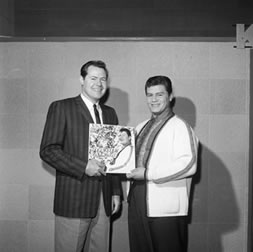
Ritchie Valens
A self-taught musician, Valens was an accomplished singer and guitarist. At his appearances, he often improvised new lyrics and added new riffs to popular songs while he was playing. This is an aspect of his music that is not heard in his commercial studio recordings.
Bob Keane, the owner and president of small record label Del-Fi Records in Hollywood, was given a tip in May 1958 by San Fernando High School student Doug Macchia about a young performer from Pacoima by the name of Richard Valenzuela.
Kids knew the performer as “the Little Richard of the Valley”. Swayed by the Little Richard comparison, Keane went to see Valenzuela play a Saturday morning matinée at a movie theater in San Fernando.
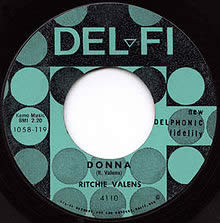
Impressed by the performance, he invited the youth to audition at his home in the Silver Lake area of Los Angeles, where he had a small recording studio in his basement. An early stereo recorder (a two-track Ampex 601-2 portable) and a pair of Neumann U-47 condenser microphones comprised his recording equipment.
After this first audition, Keane signed Ritchie to Del-Fi on May 27, 1958. At this point the musician took the name “Ritchie” because, as Keane said, “There were a bunch of ‘Richies’ around at that time, and I wanted it to be different.” Similarly, Keane recommended shortening his surname to Valens from Valenzuela in order to widen his appeal beyond any obvious ethnic group.
Valens demoed several songs in Keane’s studio that he later recorded at Gold Star Studios in Hollywood. The demos primarily consisted of Ritchie singing and playing guitar, but some of them also featured drums. These original demos can be heard on the Del-Fi album, Ritchie Valens — The Lost Tapes. Two of the tracks laid down in Keane’s studio were taken to Gold Star Studios and had additional instruments dubbed over to create full-band recordings. “Donna” was one track (although there are two other preliminary versions of the song, both available on The Lost Tapes), and the other was an instrumental entitled “Ritchie’s Blues”.
Del-Fi International Pictures
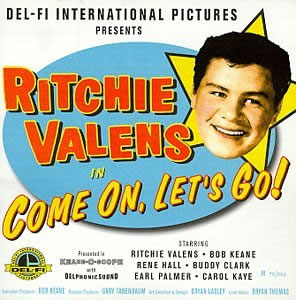
After several songwriting and demo recording sessions with Keane in his basement studio, Keane decided that Ritchie was ready to enter the studio with a full band backing him. The musicians included René Hall, Carol Kaye, and Earl Palmer. The first songs recorded at Gold Star Studios, at a single studio session one afternoon in July 1958, were “Come On, Let’s Go”, an original (credited to Valens/Kuhn, Keane’s real name), and “Framed”, a Leiber and Stoller tune.
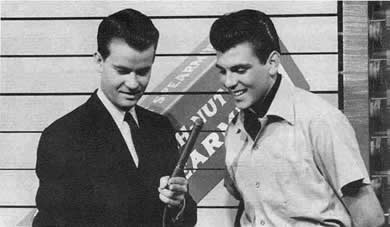
Pressed and released within days of the recording session, the record was a success. Valens’s next record, a double A-side, the final record to be released in his lifetime, had the song “Donna” (written about a real girlfriend) coupled with “La Bamba”. It sold over one million copies, and was awarded a gold disc by the RIAA.
Valens quits high school
In the autumn of 1958, Valens quit high school to concentrate on his career. Keane booked appearances at venues across the United States and performances on television programs.
Valens had a fear of flying due to a freak accident at his Pacoima Junior High School when, on January 31, 1957, two airplanes collided over the playground, killing or injuring several of his friends. Valens had been at his grandfather’s funeral that day, but was upset about the loss of his friends.
He eventually overcame his fear enough to travel by airplane for his career. He went to Philadelphia to appear on Dick Clark’s American Bandstand television show on October 6, where he sang “Come On, Let’s Go”.
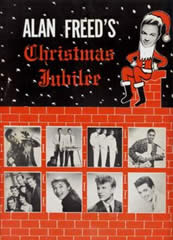
In November Valens flew to Hawaii, where he performed alongside Buddy Holly and Paul Anka. Valens was added to the bill of legendary disc jockey Alan Freed’s Christmas Jubilee in New York City, singing with some of those who had greatly influenced his music, including Chuck Berry, Bo Diddley, the Everly Brothers, Duane Eddy, Eddie Cochran and Jackie Wilson. On December 27 he returned to Philadelphia and American Bandstand, this time performing “Donna”.
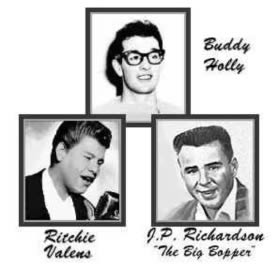
In early 1959, Valens was traveling the Midwest on a multi-act rock-and-roll tour dubbed “The Winter Dance Party”. Accompanying him were Buddy Holly, Dion and the Belmonts,J. P. “The Big Bopper” Richardson and Frankie Sardo. All performers were augmented by Holly’s new backup band, including Tommy Allsup on guitar, Waylon Jennings on bass and Carl Bunch on drums. Conditions for the performers on the tour buses were abysmal and bitterly cold. Midwest weather took its toll on the party. Carl Bunch had to be hospitalized with severely frostbitten feet, and several others, including Valens and the Big Bopper, caught the flu. The show was split into two acts, with Valens closing the first act. After Bunch was hospitalized, Carlo Mastrangelo of the Belmonts took over the drumming duties. When Dion and the Belmonts were performing, the drum seat was taken by either Valens or Buddy Holly. A surviving color photograph shows Ritchie at the drum kit.
The Day the Music Died
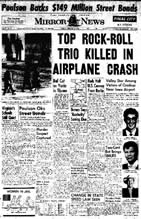
On February 3, 1959, on what has become known as “The Day the Music Died”, Valens died in a plane crash in Iowa, an accident that also claimed the lives of fellow musicians Buddy Holly and J. P. “The Big Bopper” Richardson, as well as pilot Roger Peterson. Valens was inducted into the Rock and Roll Hall of Fame in 2001.
